Bike grips are essential to any bike, as they provide comfort and control when riding. However, choosing the right size bike grips can be a daunting task, especially for first-time riders.
The size of your bike grips can significantly impact your riding experience, as the wrong size can lead to discomfort, fatigue, and even injury. We will explore how to choose the right size bike grips for your hands. We will discuss the different types of grips available, the factors to consider when selecting the size of your grips and offer some tips on properly installing your grips.
Whether you are a seasoned rider or just starting out, understanding the importance of proper grip size is crucial for a comfortable and enjoyable ride. Investing in the right size grips can help you achieve better control, reduce hand fatigue and prevent accidents.
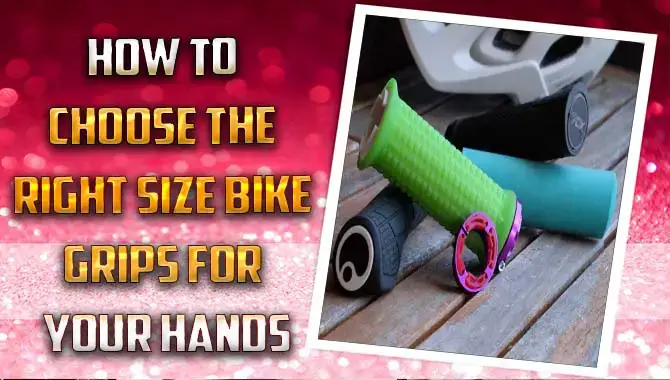
Pro Tips On How To Choose The Right Size Bike Grips For Your Hands
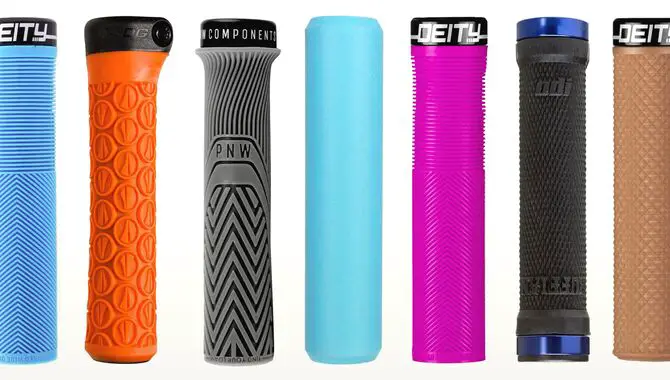
Bike grips are an essential part of any cycling experience as they help to provide a good grip and reduce hand fatigue. Choosing the right size bike grips is crucial for a comfortable and enjoyable ride. If you’re wondering how to choose the right size bike grips for your hands, there are a few stapes to consider. Luckily, some pro tips can help you find the perfect fit for your hands.
- First, measure your hand size from the tip of your middle finger to the base of your palm. This will give you an idea of what grip size to look for.
- Next, consider the type of riding you will be doing. If you plan long rides, you may opt for thicker grips that offer more cushioning. Thinner grips may be better if you prefer more control and precision.
- Another factor to consider is the material of the grips. Rubber or silicone grips are softer and more comfortable, while foam grips offer more shock absorption.
- Finally, don’t be afraid to test different sizes and materials to find the best for you. Whether you’re a novice or an experienced rider, choosing the right bike grips can make a massive difference in the quality of your ride.
Slip-On Vs Lock-On Grips: Which One To Choose?
When choosing the right grips for your bike, there are two common options: slip-on grips and lock-on grips. Slip-on grips are designed to slide onto the handlebars and require a bit of adhesive or friction to keep them in place.
On the other hand, lock-on grips feature a collar that secures the grip to the handlebars, typically with the use of a small bolt. One of the main advantages of slip-on grips is that they are usually more affordable than lock-on grips. Additionally, they tend to be lighter in weight, which can be beneficial for those looking to shave off a few ounces from their setup.
However, slip-on grips can be more prone to slipping or rotating during use, frustrating riders. This can be remedied by using a grip glue or hairspray to increase the grip’s adhesion to the handlebars. Lock-on grips, on the other hand, offer a more secure fit thanks to their locking mechanism.
This means that the grip is less likely to slip or rotate during use, which can improve overall control and comfort. Additionally, lock-on grips are easier to install and remove than slip-on grips, making them a great option for those who like to switch out.
Ergonomic Grips For Reducing Hand Fatigue
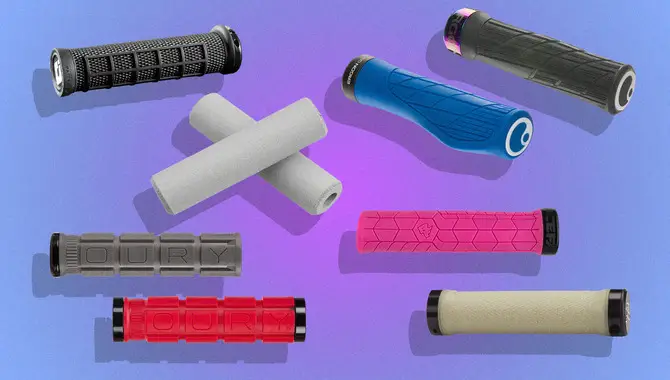
Finding the perfect size bike grips is crucial to prevent hand fatigue while riding. Ergonomic bike grips are designed to reduce pressure on your hands and wrists with proper shock absorption and grip traction.
To ensure maximum comfort during long rides or technical terrain riding mountain bikes or MTBs- consider measuring the circumference of your hand at its widest point for the correct diameter. Additionally, test out different sizes and materials, such as silicone or foam grips, to find the perfect fit. Don’t forget to consider wet weather conditions for better traction and friction on your pedals.
Standard Grips For Traditional Rides
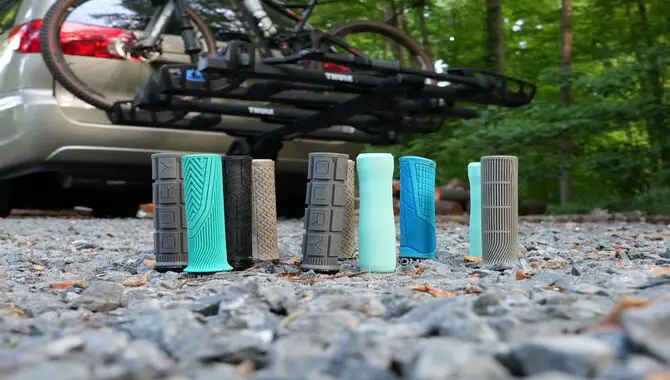
When selecting grips for traditional rides, it’s essential to factor in the handlebar length and diameter for an appropriate fit. These standard bike grips are tailored to suit most hand sizes and are made from foam or rubber.
Other grip variations can provide a personalized fit for smaller or larger hands. Discovering the right size and material by testing various options can help prevent discomfort on long rides.
Dual Compound Grips For Enhanced Traction
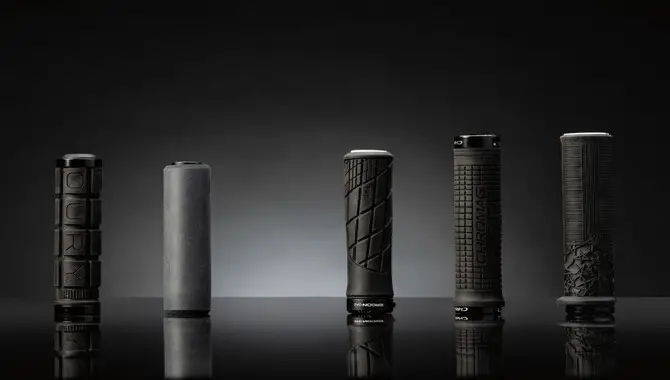
Looking for a comfortable and safe ride? Dual compound grips are an excellent option. They improve traction and reduce vibration on technical terrain, making them perfect for mountain biking. These grips combine two materials to provide better handling, with rougher textures offering better grip in wet conditions.
Thicker grips are ideal for larger hands, whereas thinner ones work well for smaller hands. Before purchasing, make sure to consider your riding style and terrain. Choose wisely between lock-on or slide-on grips, silicone or foam material- all crucial factors that can make a big difference.
Flanged/Flangeless Grips For Better Grip
Riders looking for a better grip should opt for flanged or flangeless bike grips. Flanged grips come with an extra lip or ridge on the outer end, ensuring your hands do not slip off easily. In contrast, flangeless grips offer a smoother experience and are great for mountain bikers who frequently switch hand positions while riding.
Ensure that you choose the correct diameter for your bike grip to fit comfortably in your palm without causing any discomfort or strain. Consider the thickness of your grip, too- thicker grips work better for larger hands. Also, rougher textures provide better traction in wet weather conditions, ensuring maximum security while braking or shifting gears.
Lock-On Grips For Maximum Security
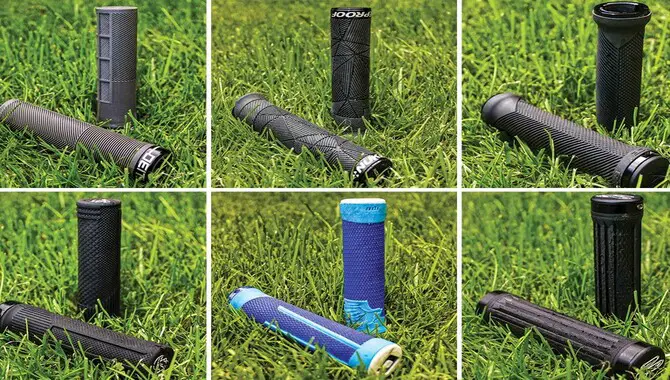
Lock-on grips are an integral part of any mountain biker’s gear kit. To choose the right diameter, measure the circumference of your hand and pick a grip that matches. Thicker grips with silicone or foam padding offer increased shock absorption on those long rides, while thinner grips provide better control in technical terrain.
Lock-on grips slide onto handlebars easily using an Allen key and won’t budge on even the roughest trails. Use rubber or silicone grips with textured surfaces that increase friction between your hand and grip for extra traction in wet conditions.
Grip Texture Or Pattern For Comfort And Control
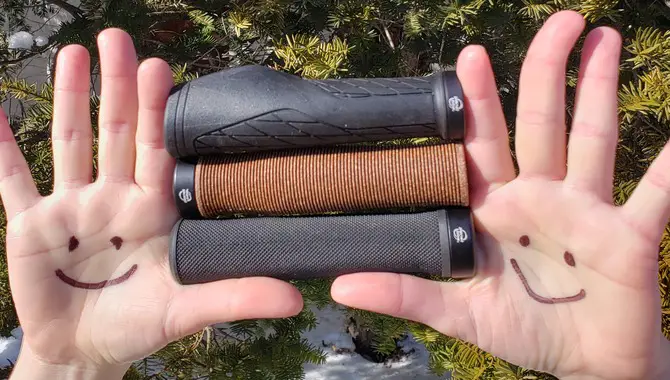
Choosing comfortable and effective bike grips is essential for any mountain biker. Start examining the width and thickness of different sizes of mountain bike grips before considering anything else, such as mountain bike pedals or handlebar size. You don’t want to deal with numbness, discomfort, or blisters when taking on technical terrain or long rides!
Style of riding also plays a significant role; traditional grips might not cut it if you’re into enduro or downhill biking; thus, ergonomics play a vital role in selecting appropriate mountain bike grips. With ergonomic grips from brands such as Ergon and ESI helping reduce hand fatigue and vibration through shock absorption technology, you’ll find yourself ready to tackle any ride.
Benefits Of Choose The Right Size Bike Grips For Your Hands
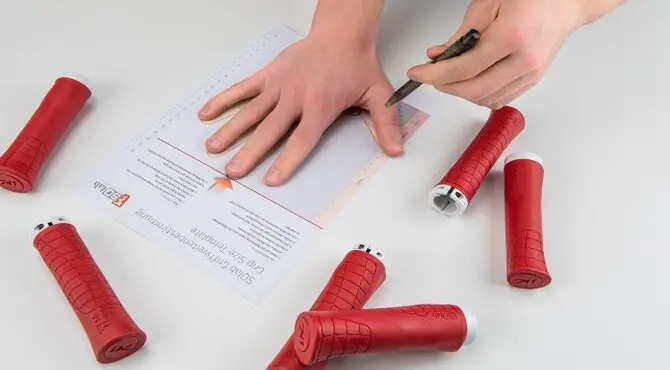
When selecting bike grips, choosing the correct diameter for your hands is essential to ensure maximum comfort and control while riding. Lock-on grips are an excellent option as they offer added security and reduce slippage during rides on technical terrain or wet weather conditions.
These durable grips are available in different sizes, making it crucial to measure your hand before purchasing. Lock-on grips are easy to install and remove and offer improved grip strength with better shock absorption and traction than slide-on or traditional rubber grips.
Mountain bikers can choose from lock-on grip styles like ergonomics, silicone, foam, or thicker grips for those with larger hands or thinner ones for smaller ones. Popular brands include ESI, Ergon, ODI, and Lizard Skins.
Conclusion
Learning how to choose the right size bike grips for your hands can help you and your ride. Choosing the right size bike grips can make a huge difference in your riding experience. It can help reduce hand fatigue, enhance traction, and provide better grip and control. With so many options available, choosing the right type for your specific needs is essential.
Whether you prefer ergonomic, standard, or dual compound grips, it’s essential to understand what works best for you. Additionally, you must also consider the materials used and the installation process before making a purchase. Lock-On Grips are a popular choice as they offer maximum security and ease of installation. So go ahead and choose the perfect bike grip for you.
Frequently Asked Questions
How Do I Choose Bike Grips?
When selecting bike grips, consider the kind of riding you’ll be doing. Measure your hand size to determine the appropriate grip thickness. Pick a material that suits your riding style and conditions, and experiment with various styles and brands until you find one that feels comfortable.
What Is The Standard Bike Grip Size?
The typical bike grip size is 22.2mm, although it may vary by handlebar diameter. Before choosing a grip size, measure your hand and consider your grip preferences. Grips come in different lengths and thicknesses, so select the one that best suits your comfort level.
What Grip Diameter Is Best?
When it comes to grip diameter, there is no one-size-fits-all answer. It depends on hand size and personal comfort. The standard diameter is 30mm, but some prefer larger or smaller diameters. Experiment with different sizes and consider your riding style before choosing the best grip diameter.
Are Bike Grips One Size Fits All?
Bike grips are not universal and can differ in size and shape depending on the brand and model. When selecting the proper bike grip, it is crucial to consider hand size and riding style. Some grips offer adjustable sizing or different thicknesses to accommodate individual preferences.
How Do I Know What Size Bike Grips To Get?
To find the right bike grips, measure your handlebar circumference and hand size. Choose a grip that matches both measurements, but also consider trying different sizes for optimal comfort.

I am passionate about writing blogs about bikes. I love riding my bike and love talking about it even more. My blog is the perfect place for anyone who loves biking as much as I do. Come check it out and learn some tips and tricks from me!